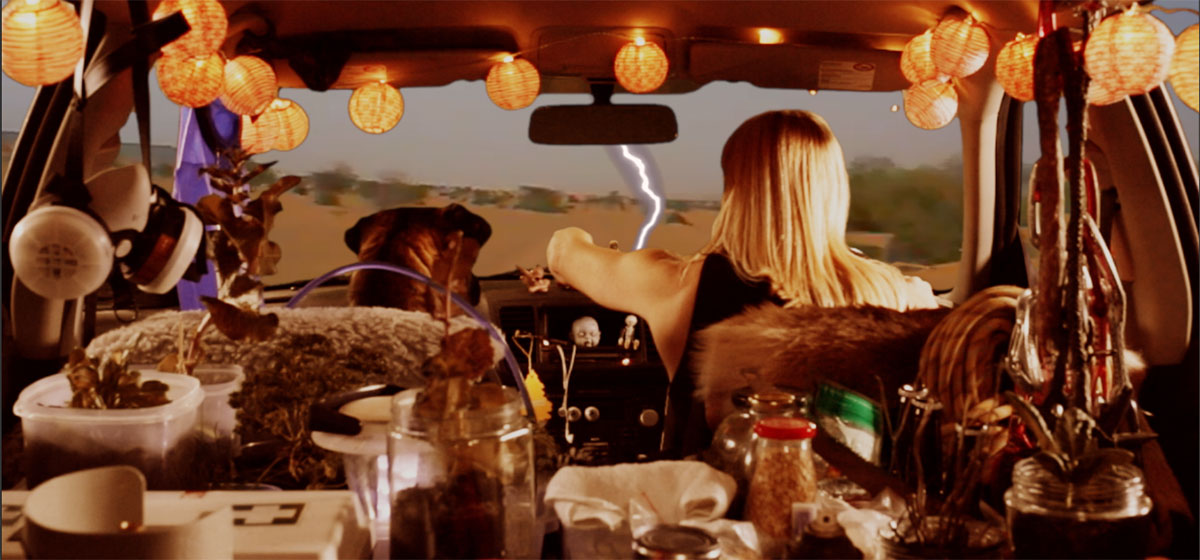
Success, Fremantle's artist-run contemporary art platform and multi-gallery exhibition venue, has a great vibe. This is due in part to the pragmatics of hosting a gallery in the basement of a defunct department store, where prohibitive electricity costs favour maximal darkness, and where ceiling tiles removed to expose the infrastructural innards allow you to feel, as a friend put it, the weight of the building above you. It’s also the programming. In its relatively short run, the gallery has hosted exhibitions examining some of our darkest fears: the inescapable machine of capitalism, mass surveillance, historical trauma, toxic masculinity, and in its more sentimental moments, the ellipses of mental illness and familial loss.
Success’s take on social paroxysm is closely aligned with New York’s DIS Collective, who since 2010 have been exploring how visualising an “accelerated” version of capitalist society might force acknowledgement of its grotesquerie and thus hasten its demise, a project that peaked this year with the DIS-curated Berlin Biennale. Hannah Black, in one of the few reviews of the Biennale to examine it closely, read accelerationism through the lens of racial politics often ignored by white critics, finding both it and the socially engaged biennales that the same critics find more comforting, wanting: “Not only is art useless in the face of all the things that artists might want it to be useful for, but the violence of states and capitalist assault on proletariat social life suggests that politics as such is mostly doomed. What art is sometimes good for is affirming that life continues even if lives fall apart, but what does that mean?”[1] Two of the four exhibitions running in the current program pose similar questions: what can art do for us, in the face of all this?
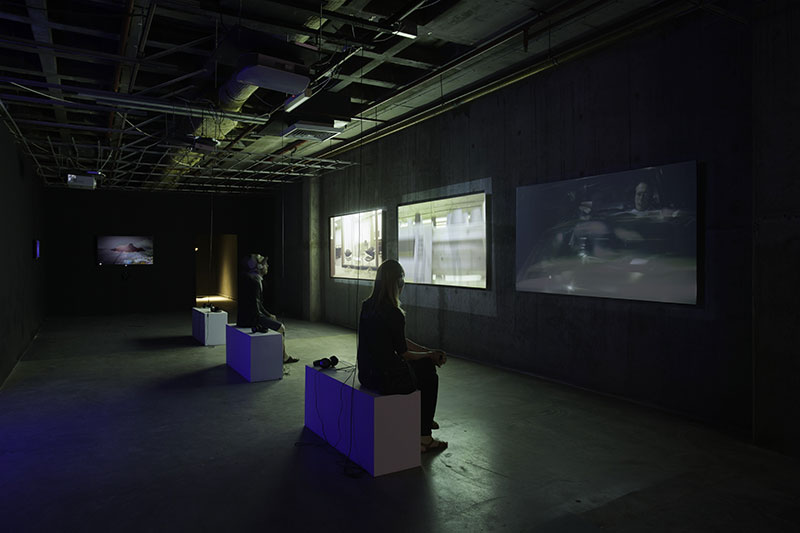
Curated by Laetitia Wilson, Inanition: A Speculation On The End Of Times focuses squarely on cataclysm, compiling artistic speculations on the “end times”. Wilson reads these through the lens of the Anthropocene, which has come to stand in for a state of catastrophic now-ness, although a cursory scanning of Wikipedia informs us that the limited consensus among Anthropocene believers is that we are somewhere between 2000 and 300 years in. Inanition addresses this misconception by retroactively claiming for the Anthropocene recent sci-fi, game-theory and other speculative fictions. Joshua Webb’s New Dawn (2008) is perhaps the most literally “Anthroposcenic”, computer-generated vision of red drapery rolling gracefully in a cracked sky above a wasteland of trash that recalls parts of the present-day Pacific Ocean. Kelly Richardson’s The Last Frontier (2013) presents a long view of a literally scorched earth, or perhaps some unfortunate new planet, on which a lonely biodome swirling with ominous cloud suggests a society’s struggle in the face of poor odds.
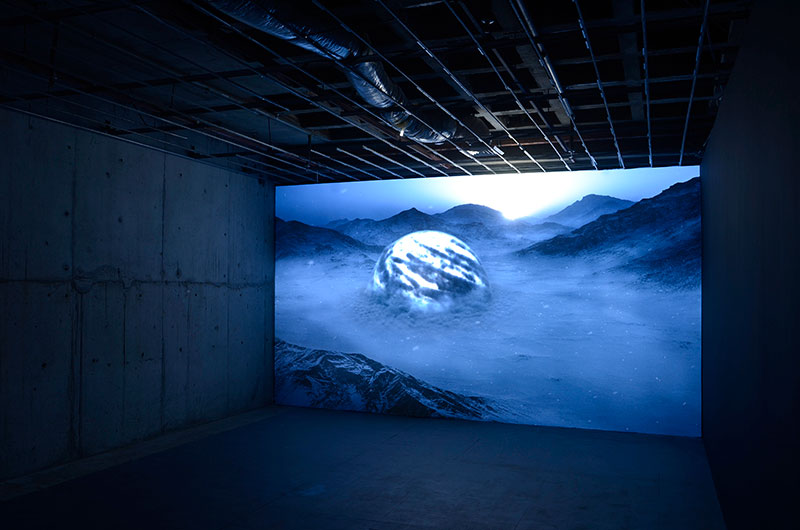
The evocative term “inanition” refers to exhaustion by lack of nourishment, a likely end-times scenario, but it can also refer to mental exhaustion, a symptom of a society out of options, stuck inside its own feedback loop. This is a pervasive thread throughout the exhibition: there’s little narrative, just existence, and barely. Erin Coates’s Driving To The Ends Of The Earth (2016) flirts with this, but manages to still offer a modicum of hope. Coates stages a car trip that is less Fury Road than patient waiting. A woman (the artist) and a car full of animate and inanimate companions (a mobile, personal society) travel unaffected through the various catastrophic scenarios occurring outside their windows. It’s one of few works in the show that demonstrates a sense of personal agency or humour.
But what’s jarring about these work isn’t the terror they might be expected to induce, but the fact that they’re so comfortably familiar. This is the likely outcome of a post-original art world drawing from a smorgasbord of cultural reference points. OK TO GO (2008) by Claire Evans and K. M. Merrill aggregates cinematic representations of “hyperspace” travel into an infinite feedback loop of celestial tunnels and circuitry; super-real pigs head in wax and gold by Thea Costantino conjure up William Golding’s 1954 classic Lord of The Flies. Even the office furniture engulfed by snow in Patrick Bernatchez’s Chrysalide Trilogy, (2007–09) is mid-20th century, a strangely nostalgic cold war fever dream.
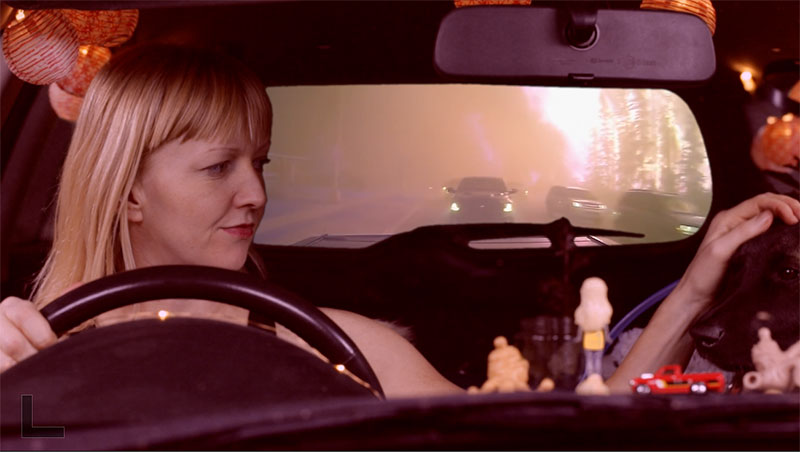
In his review of the exhibition for Real Time Francis Russell notes an emphasis on a conception of the “end times” as a single event – a Christian rapture, a nuclear holocaust, the End of History we’ve been promised for close to 30 years.[2] Offering up the singular conclusion of the grand narrative as critique is still an implicit re-enforcement of its dominance, and thus it’s difficult not to interpret these visions as a kind of retro-future. I could content myself with the beauty of the sunrise over the wasteland but would prefer to follow the lead of Coates’s protagonist and search for a vision of what else might be possible.
Russell also notes the human inability to grapple with this idea of end times due to “the personal apocalypses that are continuing around us”. This term “personal apocalypse” acknowledges an inverse of the “micro-utopias” spruiked in the 1990s by Nicolas Bourriaud, whose own attempts to dismantle grand narratives involved reconfiguring Felix Guattari’s microscopic, community-level activations of social change for deployment as Relational Aesthetics. It also has the ring of Clare Bishop’s critique of Bourriaud, the “artificial hells” that simply replicate social convention, substituting for real activism an already privileged audience’s moral perfection. We find ourselves now in a landscape of militant empathy, contemplating again the politicised personal, what intimacies and rebellions are truly possible.
This challenge is taken up in the main spaces by Passing/Parades, curated by Kate Britton. Britton explores and advocates for a diversity of queer expression, bringing together in the work of eight artists and two collaborations from around Australia. Britton’s text for the exhibition reads like an anti-manifesto, positioning queerness not as a fixed space or set of markers but as a process, malleable and necessarily resourceful. We’re beyond the “relational” here, moving through it into an implicit understanding of identity as situated, composed of relations. The twin titles conjure conflicts of desire and expectation: “passing” for straight while celebrating difference, being proudly visible while negotiating a society that co-opts, polices, and threatens your being. This conundrum is neatly encapsulated by the irony of staging a paean to queer visibility underground, literally; although Britton works Success’s darkness and hidden nooks effectively, creating spaces for secrets as well as bold statements.
Torrie Torrie’s functional Sauna (2016) beckons from the periphery, hosting under soft pink light up-close but atmospheric videos of female self-pleasure. In a quiet corner, Liam Colgan’s Playing on the Surface of our Bodies (2014) reminds us that although safe and hidden spaces for queerness are necessary, we work with and on whatever spaces we inhabit. Colgan recreates an office photocopy room, its carpet and shelves lit by a projection of a photocopier – an object usually lit from within, for reproduction – to instead stroke the multi-coloured pulses of dance floor lighting. The machine itself lurks quietly as though waiting, suddenly personified as if possessing another kind of interior life.
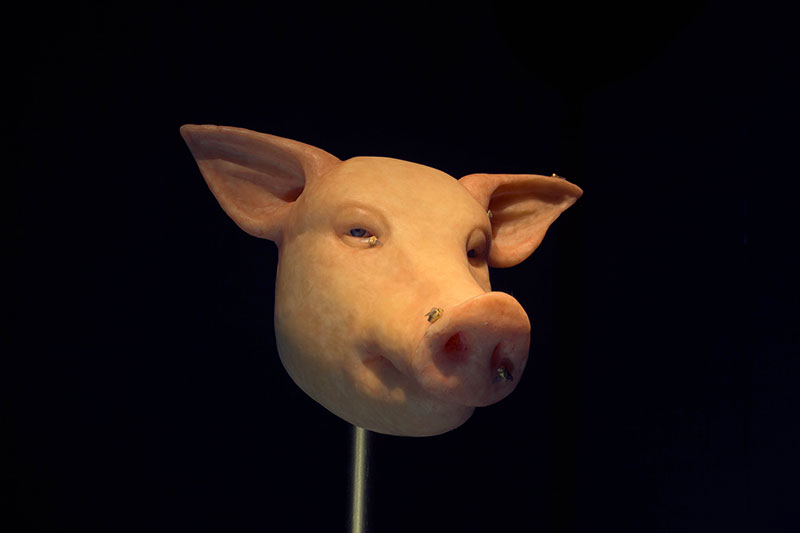
Salote Tawale’s Creep (2014), creates another affecting flip between interiority and externalisation. A three-minute loop of Tawale speak-singing the chorus of Radiohead’s 1993 hit is pumped throughout the main space: I’m a creep creep creep creep … what the hell am I doing here, I don’t belong. It’s pervasive, and moving through the space it’s difficult not to internalise it, as though it were your own self-consciousness. But, through a lit doorway, is a wall-sized video of Tawale’s face framed webcam-close , and a suddenly you’re confronting belonging, exclusion, invisibility and desire not through your own eyes but through hers.
In this exhibition there’s violence and hurt, turned in on itself; there’s bodies abstracted, transmogrified through costuming, movement and imagining; there’s bondage and freedom and memorials and glitter. And there’s a society of three in Hissy Fit, making a road trip through a city that’s not a wasteland yet but sometimes behaves like one. The trio take ownership of it by simply occupying space, cradling this sense of shared existence like a candle. As Britton puts it: “Across cities and skin we record stories as an act of survival.”
In the gulf between each exhibition’s definition of survival can be glimpsed a stockpile of questions: What can art do? What can the individual do? What can the collective do? These are all concerns that respond to the use-by-date of white-Western-hetero-hegemony and its totalising narratives of progress. Whose stakes are higher, and more pressing? How do we safeguard ourselves against future despair? This is the benefit of speculation: you can work all the angles. What these two very different exhibitions agree on at least is we are all stuck, in the “year of our Lord” 2016, leveraging the extent of our compromise, managing the extent of our responsibility. Perhaps that’s all the common ground we’ll need.
Footnotes
- ^ Hannah Black, 9th Berlin Biennale, Artforum, September 2016: https://artforum.com/inprint/issue=201607&id=63010.
- ^ Francis Russell, Inanition: A Speculation On The End Of Times, September 2016: http://www.realtimearts.net/article/134/12398.

